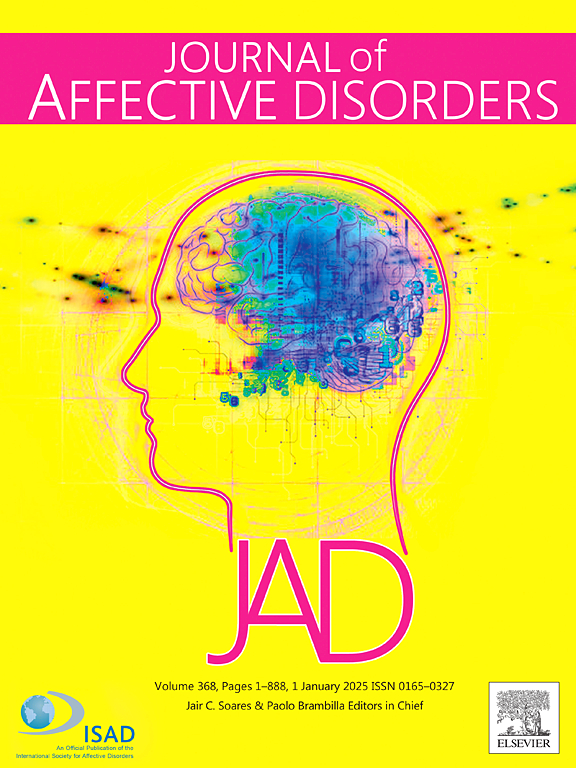Longitudinal association between consecutive moderate-to-vigorous physical activity and the risk of depression among depressed and non-depressed participants: A nationally representative cohort study
IF 4.9
2区 医学
Q1 CLINICAL NEUROLOGY
引用次数: 0
Abstract
The association between moderate-to-vigorous physical activity (MVPA) with depression are clear but needs to be investigated considering dynamic changes in MVPA. We investigated the association of longitudinal changes in MVPA with depression-related outcomes among depressed and non-depressed participants. From 209,095 depressed and 3,777,173 non-depressed participants of South Korea, MVPA was assessed from health screenings during period 1 (2014–15) and 2 (2016–17) using self-reported questionnaires. Participants were followed up from January 1, 2018 to 1-year and 3-year for any diagnosis of depression. Adjusted odds ratio (aOR) and 95 % confidence interval (CI) were calculated using multivariable-adjusted logistic regression analysis. From depressed participants, consistently highly active participants showed the lowest odds for incident depression (aOR 0.81; 95 % CI 0.70–0.95), while those who increased MVPA showed the lowest odds for depressive symptom (aOR 0.77; 95 % CI 0.72–0.82). When combining MVPA status during period 0 (2012−13) for the longitudinal analysis, the participant with depression at period 1 showed a lower odds if they maintained to be physically active before and after depression diagnosis (from period 0 to period 2). We found epidemiologic evidence that longitudinal evaluation for MVPA from pre-depression state may be important on analyzing depression-related risk.
求助全文
约1分钟内获得全文
求助全文
来源期刊

Journal of affective disorders
医学-精神病学
CiteScore
10.90
自引率
6.10%
发文量
1319
审稿时长
9.3 weeks
期刊介绍:
The Journal of Affective Disorders publishes papers concerned with affective disorders in the widest sense: depression, mania, mood spectrum, emotions and personality, anxiety and stress. It is interdisciplinary and aims to bring together different approaches for a diverse readership. Top quality papers will be accepted dealing with any aspect of affective disorders, including neuroimaging, cognitive neurosciences, genetics, molecular biology, experimental and clinical neurosciences, pharmacology, neuroimmunoendocrinology, intervention and treatment trials.
 求助内容:
求助内容: 应助结果提醒方式:
应助结果提醒方式:


